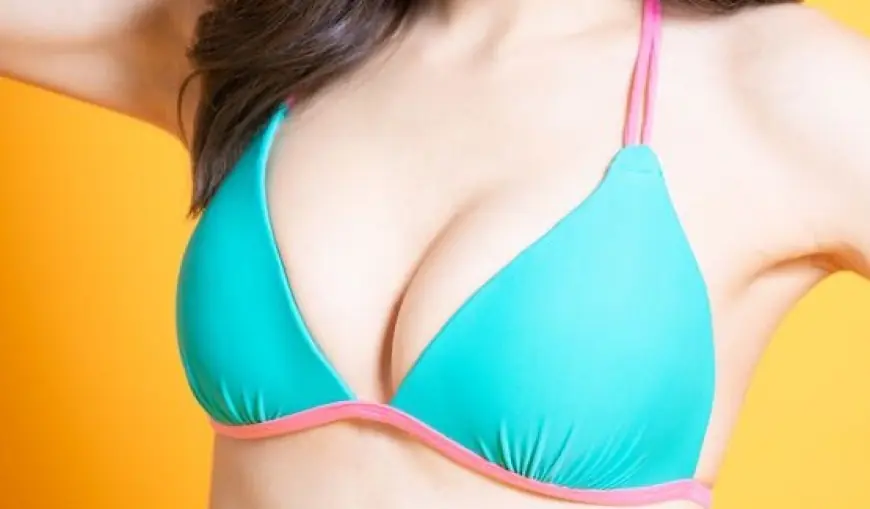What Does the Perfect Breast Look Like: Proportion Insights
Perfect breast proportions are less about meeting a rigid standard and more about achieving visual harmony with the body.

Breast aesthetics are highly subjective, shaped by cultural trends, personal preferences, and natural anatomy. While beauty standards vary, experts often agree that certain proportional features create visual harmony. Breast proportions are not only about size but also involve shape, symmetry, and the relationship between the bust, torso, and overall body silhouette. The concept of the Perfect Breasts in Dubai emphasizes balance rather than absolute measurements, recognizing that each body has unique characteristics.
Symmetry and Balance:
Symmetry plays a crucial role in perceived Beautiful woman’s Perfect Breasts look like (كيف يبدو الثدي المثالي). Perfectly symmetrical breasts are rare, and minor asymmetries are natural. However, proportional symmetry—where both breasts appear balanced relative to the torso—is key. The ideal proportion often considers the horizontal and vertical alignment of the breasts with the chest, shoulders, and waist. Even subtle differences can affect visual perception, highlighting the importance of proportional balance over exact equality.
The Ideal Shape: Natural Contours
The shape of the breast contributes as much to perception as its size. A rounded, teardrop-shaped contour is often considered aesthetically pleasing, blending fullness at the lower pole with a gentle slope toward the upper pole. Proper proportion ensures the breast aligns naturally with the chest wall, avoiding an exaggerated appearance. The curvature and slope impact how the breast fits within the overall body silhouette, influencing clothing fit and overall body aesthetics.
Upper-to-Lower Pole Ratio:
One of the most discussed proportional features is the upper-to-lower pole ratio. This ratio compares the fullness of the upper (above the nipple) and lower (below the nipple) parts of the breast. Research and aesthetic studies often cite a 45:55 or 40:60 ratio as visually harmonious, where the lower pole has slightly more volume than the upper. This creates a natural, youthful look, avoiding a flat or overly full upper breast that may appear artificial.
Nipple Position and Areola Size:
Nipple placement is essential in achieving proportional beauty. Ideally, nipples should be centered on the breast mound, facing slightly forward, and positioned at a natural distance from the sternum. Areola size also affects visual proportion; medium-sized areolas typically harmonize with the breast size, contributing to overall balance. Disproportionately large or small areolas can distract from symmetry, while proper positioning enhances the perception of youthful, well-proportioned breasts.
Breast Width and Chest Alignment:
The width of the breast relative to the chest wall influences proportional aesthetics. Breasts that are too narrow or too wide in comparison to the torso can disrupt visual harmony. Proper alignment considers the distance between the breasts, the width of the chest, and the curvature of the ribcage. Ideally, the cleavage should complement the body’s natural contours, with the breasts positioned to enhance the torso’s proportion without appearing unnaturally separated or crowded.
Body Proportion and Overall Harmony:
Perfect breast proportions cannot be assessed in isolation; they must complement overall body proportions. Factors like shoulder width, waist-to-hip ratio, and torso length influence what appears visually balanced. For instance, a smaller torso may suit moderately sized breasts, while a broader frame may carry fuller breasts without looking disproportionate. Considering body harmony ensures that the breasts enhance the natural physique, creating an overall balanced and aesthetically pleasing appearance.
Embracing Individual Variations:
While aesthetic guidelines provide helpful insights, perfection is subjective and varies with individual preferences. Genetics, age, and lifestyle all affect breast appearance, and minor imperfections are natural and normal. Embracing variations and understanding proportional harmony rather than pursuing an exact standard allows individuals to appreciate natural beauty. Confidence and comfort with one’s body often contribute more to perceived perfection than strict adherence to specific measurements or ratios.
Conclusion:
Perfect breast proportions are less about meeting a rigid standard and more about achieving visual harmony with the body. Key factors include symmetry, shape, upper-to-lower pole ratio, nipple positioning, breast width, and alignment with the torso. While ideal proportions such as a 45:55 upper-to-lower pole ratio or centered nipples provide useful benchmarks, individual variation plays a significant role in defining beauty. Ultimately, a well-proportioned, balanced breast appearance enhances overall aesthetics, complements natural body features, and promotes a sense of confidence and self-appreciation.
What's Your Reaction?
 Like
0
Like
0
 Dislike
0
Dislike
0
 Love
0
Love
0
 Funny
0
Funny
0
 Angry
0
Angry
0
 Sad
0
Sad
0
 Wow
0
Wow
0
















































